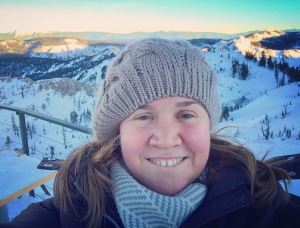Hello, everyone. Just back from my spring break trip to Montenegro and Croatia, two gorgeous countries, both formerly part of Yugoslavia. The trip fell upon me by happenstance – my friend wanted to see Dubrovnik and no matter how we sliced it, we couldn’t get there without 7+ hours of driving or connecting flights. These days my patience for airplane connections is rather low, especially when it comes to a break from school. Thankfully, Katie had the presence of mind to look at a map of the region… and we were off to Tivat, Montenegro!

We were elated to touchdown at little Tivat Airport to sunny skies and 70F weather. Though this glorious weather didn’t last all week, it certainly cemented our appreciation for the gorgeous fjord that is the Bay of Kotor. This tiny country, half the size of Wales, packs a stunning aesthetic punch.
A few things to know before you go – Montenegro means “black mountain”. This ruggedly handsome country is a combination of deep water and soaring sky, with jagged mountain ridges uniting the two. Wedged in between Croatia, Bosnia & Herzegovina, Serbia, Kosovo, and Albania, Montenegro is one of the world’s youngest countries, born in 2006 (only senior to Kosovo and South Sudan). The majority of the population is Orthodox Christian, which played a role in the regional factions that led to the dissolution of Yugoslavia in the 1990s.

As we drove along the fjord, orange trees and wisteria dotted the waterfront properties. Mountain streams came crashing into the fjord, producing churning water that could surely be harnessed for natural power. Rocky crags jutted out over the single lane highways, hemmed in only by flimsy-looking netting.
All visitors to Montenegro have 24 hours to register with the police. If you stay at a hotel or Airbnb, your host will often do this for you. Euros are the currency here, though it is not an EU country. It is, however, a travel destination for Russians as no visa is required here. The same is true for Americans.
We began our stay at the Boutique Hotel Casa del Mare Aurora, a hidden gem that I cannot recommend highly enough. Another accidental finding, this spot proved perfect for two teachers to unwind and acquaint ourselves with local customs.

The hotel featured a gorgeous deck over the water where locals and hotel guests would congregate each afternoon. Whether we fancied an Aperol spritz or a glass of Vranac (the delicious local specialty of a Cabernet Sauvignon and a rich, dark-berried Syrah), the sommelier had us covered. Definitely the best hotel breakfast buffet I’ve ever encountered, and the kindest staff to boot.

Looking to explore (and find an ATM), we made our way to Perast, a town along the Bay of Kotor featuring stunning views and two churches on man-made islands just off-shore.


After a few days of rest, we ventured into Kotor, an ancient town which was ruled by both the Byzantines and Venetians at one point throughout history. Dating back to 300BC, the red-roof city charms many a cruise-ship visitor (ships do dock here regularly).


From the road, the medieval walls of Old Town hide the adorable town within, and the cliffs above the city do well to mask the church and fortress which cast a watchful eye over the little town.


Exploring more of the local area, we first drove down to Budva and then inland to the edge of Lovcen National Park. Having opted for digital-free navigation, we noticed a road sign indicating Kotor was accessible without retracing our steps. Little did we know we would end up on the Serpentine Road!
We began at 880m above sea level (that’s 2,200 feet or a half mile). Down and down the switchbacks I drove, encountering few cars (thankfully) but a horse and multiple cattle along the way. The views were extraordinary, like walking on the wing of an airplane.

Renting a car was pivotal for exploring Montenegro but we opted to take a bus to Dubrovnik, knowing that the majority of the ride would be spent traversing the circumference of the Bay of Kotor. We wanted to enjoy the view without stress (those pesky crags!).
I’m going to pause the story here as I have to go pack another bag (don’t tell my cat!). Headed to meet some art teachers at the NuArt Festival in Aberdeen this weekend. Look for a Croatia blog post forthwith!

